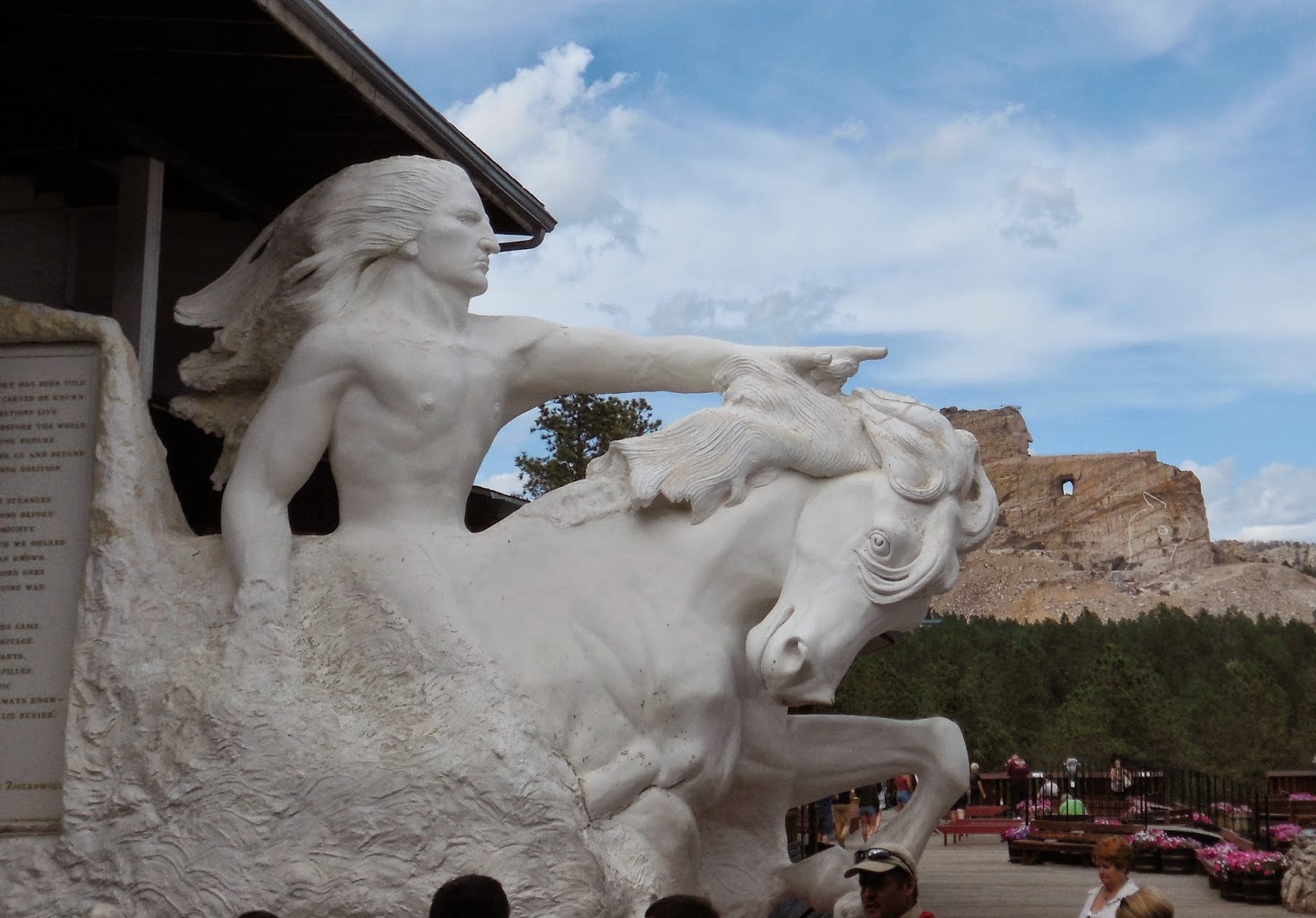Summer's the time for fixing the highways everywhere, but they do it differently in South Dakota than they do it at home. Rather than just patching the holes, or resurfacing the road, they scrape it all off down to dirt, then rebuild a brand-new road--both sides of the road at the same time. If they're feeling friendly, they water it well, so it gets mud all over your vehicle. It gets wash-boardy; it gets potholes; it gets downright nasty! And we ran into it about 10 miles away from the park. (sigh)
Then (double sigh) as soon as we turned off the highway, we see more construction where they're taking out the old asphalt in the parking lot and replacing it with concrete! Apparently oil was leaking down into the cave. Now you know: parking lots pollute.
George isn't as interested in caves as I am. For one thing, most caves aren't designed for guys who are 6'6", so he's always bumping his head. For another, some of the caves we've visited have been less than awe-inspiring. But a cave with "Jewel" in its name? Shouldn't that be worth a peek? We stood in line at the kiosk to get tickets (first-come, first-served) for the 1/2-mile Scenic Tour. If it's summer, expect to wait. And be sure to take a jacket--it's 49 degrees in this cave!
 Just before 1:00, our Tour Guide Eric, came out to escort us around the corner to the elevator. When we got off the elevator, we had to go through an air-lock door into the cave. Eric showed us how the barometric pressure inside the cave can cause the wind at the door to flow either in or out. Weird. (I couldn't remember how this worked; I had to ask George. Thanks, honey!
Just before 1:00, our Tour Guide Eric, came out to escort us around the corner to the elevator. When we got off the elevator, we had to go through an air-lock door into the cave. Eric showed us how the barometric pressure inside the cave can cause the wind at the door to flow either in or out. Weird. (I couldn't remember how this worked; I had to ask George. Thanks, honey!
They call the Scenic Tour "moderately strenuous" because there are 723 stairs. Most of them go down, so it's not as bad as it sounds. I tried counting them, and I'd get a number. Then the guide would stop us and talk about formations, and I'd forget where I was...or I'd forget to start counting again. Short-term memory is really a pain!
Jewel Cave is the third longest cave in the world. It's another one of those caves that's 3-dimensional, so don't just think a long, long passageway. Many of the formations in this cave are calcite crystals, and this cave has more than the others. There's a lot of the kind they call popcorn. Some are bright and shiny (crystal clear sort of) but a lot is sort of dull brownish.
The cave is mostly dry, and doesn't have water dripping through it to make stalactites and stalagmites in most places. This stuff is called flowstone. Looks like jellyfish.
There's popcorn here, and some flowstone. Draperies in some pics, soda straws in another. I enlarged the photos a bit so you can actually see them.
This formation is called "cave bacon", and is a type of drapery. Instead of hanging down, it sticks out from the wall. The red is iron oxide so it really does look like a giant piece of bacon.
These skinny little stactites are called "soda straws".
More formations. This was actually a pretty cool cave, even without the stalactite/stalagmite drama of Carlsbad.
The guide told us that people are the worst pollutants in caves. We drop hair, skin, dirt that's on our clothing and shoes. In Jewel Cave, the gridded walkways have tarps suspended below them to catch the lint--each year they clean out 100 pounds of it. Yuck!
For more pictures, click here: Jewel Cave Natl Monument





















.JPG)
.JPG)






.JPG)



.JPG)
.JPG)





.JPG)
.JPG)
.JPG)

.JPG)

.JPG)

.JPG)
.JPG)